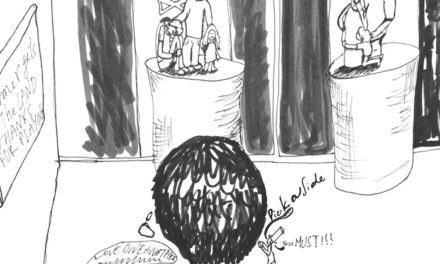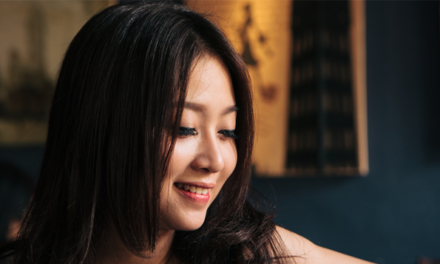Sexualizing Disease Dehumanizes the Afflicted
I was leaving Taste of Emory last Monday when a student fundraising for Beta’s “Breast Week Ever” asked whether I wanted to buy a tank top with pink ribbons and a baseball that read, “Save Second Base.” I told him, “I would rather save the women attached to second base,” while awkwardly skulking away. Although a concern for breast cancer victims is admirable, there is a way to raise funds and awareness without sexualizing the disease and objectifying its victims. Tactics such as these privilege breasts’ sexual appeal over the intrinsic value of a human life.
There was a time when this discourse could have been considered helpful, even revolutionary. Before the advent of second-wave feminism and modern cancer treatment, breast cancer was considered shameful. It was spoken about in hushed tones, and many women were too ashamed to seek the treatment they needed. Strong, committed activists brought mainstream recognition to breast cancer in the late 1980s and early 1990s. Today, with the vast majority of Americans aware of breast cancer, problematic tactics such as “Save the Boobies!” add no benefit. They do not increase consciousness, but rather turn the tragic into the erotic.
Of course, this sexualized rhetoric is not meant to be taken seriously. No one is earnestly suggesting that the only threat breast cancer poses is to men’s sexual pleasure. However, in a culture that routinely objectifies and values women solely for their sexual appeal, this light-hearted approach to a horrifying disease becomes demeaning.
This attitude is obviously not limited to Emory’s campus. Wrist bands that say, “I <3 Boobies” or “Save the Ta-Tas” equate survival with sexuality and femininity. This feeds into the narrative of the “shero,” or the “female hero.” The shero fights breast cancer with verve and assertiveness, but does so in a characteristically feminine way. Such a narrative leaves no room for women who don’t seek out wigs or reconstructive surgery, men or, most strikingly, those who do not survive breast cancer.
A link between bodily sexual appeal and survival is particularly disturbing when one keeps in mind a common form of treatment – mastectomy. The sexualization of breast cancer does not comfort those who have lost one breast or two. It does not comfort a woman enduring a second round of chemotherapy. It does not console the victims’ worried friends and family.
When Angelina Jolie chose to undergo a double mastectomy because she had a high likelihood of developing breast cancer, many were supportive. However, there was a vocal minority that expressed outrage that Jolie would deny the world her cleavage. Two particular tweets: “Angelina Jolie had to remove her boobs, I call that karma hoe!” and “Why has Angelina Jolie lobbed her tits off? She hasn’t got breast cancer so why do it. Attention seeking slut.”
In one particularly egregious example of the intersection of titillation and breast cancer awareness in 2012, Pornhub offered to donate a penny for every 30 views of their breast-focused videos. Susan G. Komen for the Cure, the intended recipient of the donation, rejected Pornhub’s offer. A strident pragmatist may ask why a foundation would decline a well-intended, legal donation. The answer may very well lie in a campaign that uses turns of phrase like “Let the good times bounce.”
Breast cancer is the only disease sexualized to this extent. When men experience prostate cancer, there are no comedic campaigns. When groups fundraise for Alzheimer’s, no one would dream of making shirts that say, “Got head?” Nor would anyone sell tanks that read, “Give me some sugar” for diabetes research.
Breast cancer is treated as a “sexy” disease, not only in terms of its sexualization, but also in its mass appeal. When we focus our attention and resources on breast cancer, we decline to take notice of other pressing issues. Many more women will die of heart disease than breast cancer, but no tanks have been sold this spring that say, “Have a heart.” There is nothing sexy about the cardiovascular system. Although funding and awareness for breast cancer treatment is indeed important, there is an opportunity cost – attention and resources for other serious diseases.
Although the desire to help women suffering from a horrible disease is laudable, it is important to think critically about the best way to do so. At times it involves reaching out to less “sexy” diseases that warrant more funding or attention. Sometimes it means toning down sexualized methods and focusing on the women at risk. It could be shrewdly examining which organizations merit donations. Philanthropy is important for any organization, but there are better ways to handle it than shouting, “Save Second Base!”
– By Hobie Hunter
The Emory Wheel was founded in 1919 and is currently the only independent, student-run newspaper of Emory University. The Wheel publishes weekly on Wednesdays during the academic year, except during University holidays and scheduled publication intermissions.
The Wheel is financially and editorially independent from the University. All of its content is generated by the Wheel’s more than 100 student staff members and contributing writers, and its printing costs are covered by profits from self-generated advertising sales.





